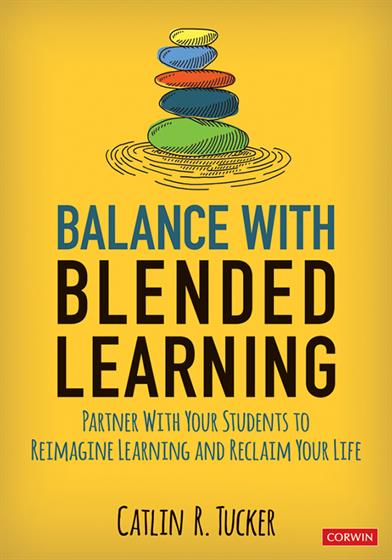Preface
Acknowledgments
About the Author
Chapter 1: The Problem With Traditional Grading Practices
Problems With Traditional Grades
My WHY
Grades Are Hotly Debated in Education
If We Cannot Throw Out Grades Completely, What Can We Do?
Blended Learning to the Rescue
Chapter 2: Embracing a Partnership Model With Blended Learning
From Hierarchy to Partnership
Partnership Principles for Teachers and Students
How Can Blended Learning Support a Teacher–Learner Partnership?
Chapter 3: Who Is Doing the Work in Your Classroom?
Lack of Time and Exhaustion Are Barriers to Innovation
Who Is Doing the Work?
Reframe the Way You Think About Your Work
Flip the Workflow in Your Classroom
Chapter 4: Encouraging Metacognition in Your Classroom
The Power of Metacognition
Five Strategies Designed to Develop Metacognition in the Classroom
Building a Metacognitive Practice Into the Classroom With Blended Learning
Chapter 5: Flip Learning With Videos
The Benefits of Using Videos With Students
Video Is Versatile
Addressing Concerns About Using Video in School
Creating Your Own Video Content
Curating Video Content Online
Chapter 6: Goal Setting
Motivating Unmotivated Students
Goal-Setting Strategies
Chapter 7: Real-Time Feedback Using the Station Rotation Model
Troubleshooting Challenges With Traditional Approaches to Feedback
Spotlight Blended Learning Model: Station Rotation Model
Tucker Time Feedback Station
Real-Time Feedback Tips
Tech Can Make Giving Feedback Easier
Deciding on the Feedback Format That Fits
Chapter 8: Rubrics for Learning
Rubrics as Roadmaps
Rubric Design: Avoiding Common Mistakes
Using Rubrics to Further Student Learning
You Don’t Need to Assess Every Aspect of Every Assignment
Single Skill Rubric: Less Is More
Chapter 9: Side-by-Side Assessments
Ask Yourself, Why Am I Grading This?
Select a Blended Learning Model and Design Your Lesson
Select Specific Grading Criteria for Your Side-by-Side Assessments
Prior to Side-by-Side Assessments, Ask Students to Complete a Self-Assessment
Preparing for Side-by-Side Assessments
Conducting Side-by-Side Assessments
Chapter 10: Students Communicate Directly With Parents About Their Progress
It’s Unrealistic for Teachers to Communicate With All Parents Regularly
Email Updates
Publishing Student Work
Student-Led Conferences
Preparing for Student-Led Conferences
Virtual Student-Led Conferences
Chapter 11: Grade Interviews
Students Become Active Agents in the Grading Process
Apply for a Grade Interview
Preparing for Grade Interviews
Conducting Grade Interviews
The Possibilities of a Partnership Model
The Goal: Achieving Balance
References
Index



